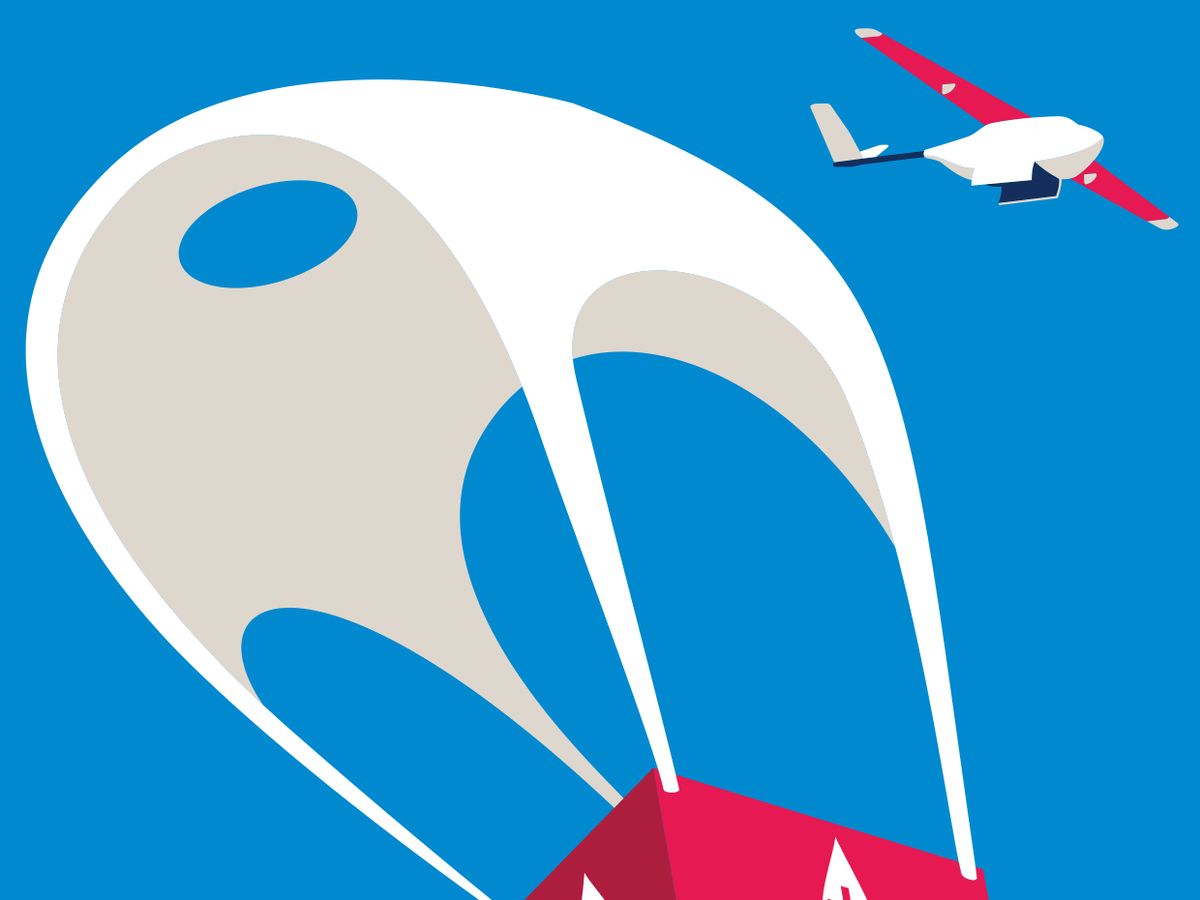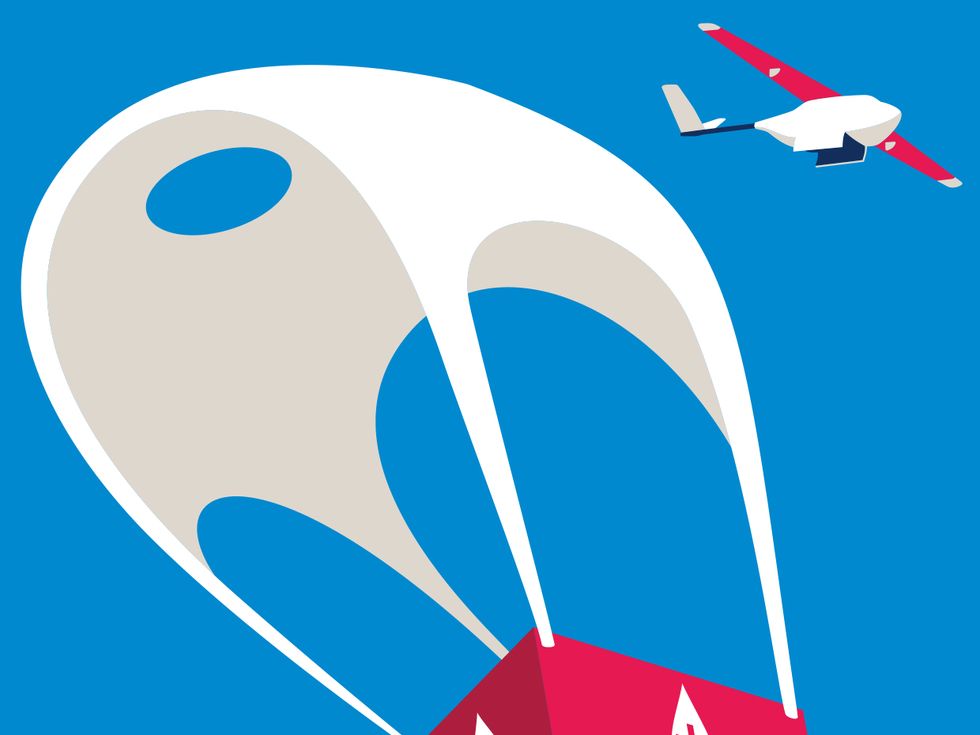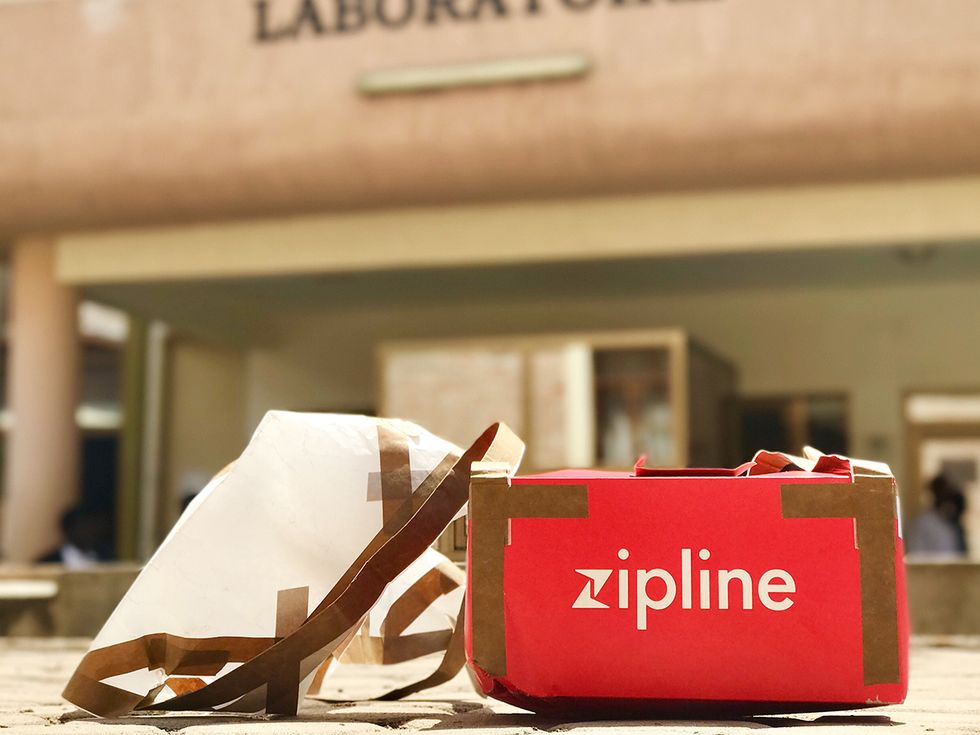Zipline Expands Its Medical Delivery Drones Across East Africa
Doctors order by app and wait for medical supplies to drop from the sky


While companies like Amazon pour considerable resources into finding ways of using drones to deliver such things as shoes and dog treats, Zipline has been saving lives in Rwanda since October 2016 with drones that deliver blood. Zipline’s autonomous fixed-wing drones now form an integral part of Rwanda’s medical-supply infrastructure, transporting blood products from a central distribution center to hospitals across the country. And in 2018, Zipline’s East African operations will expand to include Tanzania, a much larger country.
Delivering critical medical supplies in this region typically involves someone spending hours (or even days) driving a cooler full of life-saving medicine or blood along windy dirt roads. Such deliveries can become dangerous or even impossible to make if roads and bridges get washed out.
Zipline’s drones avoid such problems entirely, slashing delivery times to minutes. The drones, called Zips, fly blood packs from a distribution center in Muhanga, Rwanda, to 21 hospitals located within 75 kilometers. In an emergency, a doctor can use WhatsApp Messenger to request blood, which gets packed into a Zip that’s fired into the air with a catapult. Using GPS navigation (and in coordination with Rwandan air traffic control), the drone heads for its target. When the Zip reaches its destination, typically within an hour of the initial request, the doctor gets a WhatsApp message to come outside, and the Zip drops the blood pack in a padded container with its own little parachute. The Zip then heads back home for an arresting-hook-assisted landing onto a soft mat, and it’s ready to fly again after a quick battery swap.
Zipline’s system in Rwanda solves two problems. The first, as Zipline founder Keenan Wyrobek explains, is the short shelf life of whole blood, which makes planning what types and amounts to keep on hand at each hospital difficult. As a result, some hospitals don’t have the packs they require, while other packs go unused. Central stocking with immediate distribution via drone is the solution.

This system also helps in an emergency. Zipline CEO Keller Rinaudo describes what happened to a 24-year-old woman who gave birth via C-section at a hospital. There were complications after the birth, and the woman began to hemorrhage. The doctors immediately gave her two packs of blood. “But she bled out in 10 minutes,” Rinaudo says. “She was in real danger.” The doctors had no more packs of her blood type, so they placed an emergency order with Zipline. A procession of drones (each 12-kilogram Zip has a payload of just 1.5 kg) ended up delivering seven units of red blood cells, two units of plasma, and two units of platelets. “All of that was transfused into this woman—that’s more blood than you have in your body normally—and they stabilized her,” he says.
Zips are able to make such lifesaving flights at night, through heavy rain, or in high winds. And Zipline is already developing a new generation of Zips with even longer ranges and larger payloads and the ability to make more deliveries per day.
According to Rinaudo, “the technology is the easy part.” The hard parts are making sure all regulatory issues are resolved, finding and training a local team to operate the distribution centers, spreading word to doctors and health care workers about the service, and communicating with people who see the drones whizzing overhead. “We want them to understand how this technology benefits them,” Rinaudo says. So far, the benefits are significant: Zipline’s partners estimate that over its operating life each Zip will save eight lives.
Adam Klaptocz, founder of WeRobotics (which establishes drone innovation labs in developing countries), is impressed by what he characterizes as Zipline’s “brute force” approach. With a realistic focus on one-way delivery of blood products, “they can do it well—and they operate—which is more than most drone companies,” he says.
In Rwanda, Zipline’s goal is to be the primary blood distributor for most of the region’s hospitals. After Zipline opens a second distribution center it has planned there, Zips will be able cover the entire country, making hundreds of deliveries each day. In Tanzania, Zipline will deliver a wider range of medical products. The company expects to establish four Tanzanian distribution centers, with enough drones to make 2,000 deliveries per day to more than 1,000 health facilities.
Rinaudo says that Zipline is likely to begin operations in a few other countries in 2018 as well, although he’s not yet ready to specify which ones. “Rwanda has shown such remarkable success that a lot of other countries want to follow in its footsteps,” says Rinaudo. “The problems we’re solving in Rwanda aren’t Rwanda problems, they’re global problems—rural health care is a challenge everywhere.”
This article appears in the January 2018 print issue as “Medical Delivery Drones Take Flight in East Africa.”
Correction: We originally poked a bit of fun at UPS for also testing superfluous drone deliveries, but UPS let us know that the UPS Foundation has in fact been supporting Zipline through a partnership with Gavi, the global vaccine alliance. We regret the error, and will continue to just poke fun at Amazon instead, until they tell us what good delivery drone deeds they've done lately.